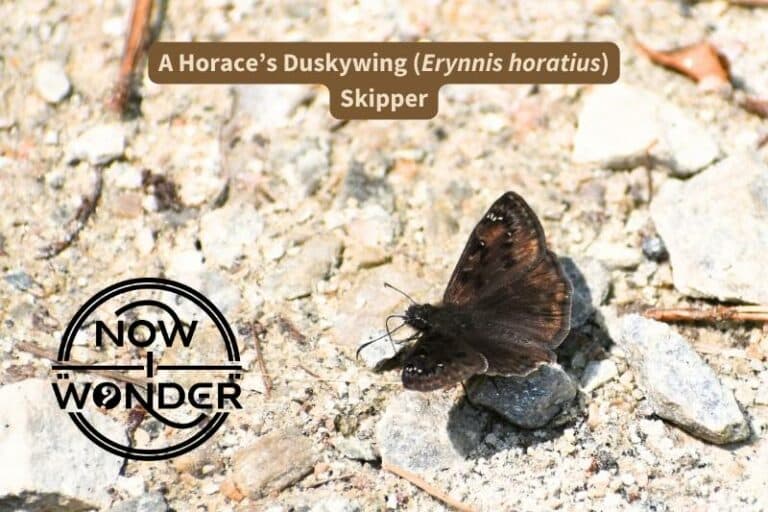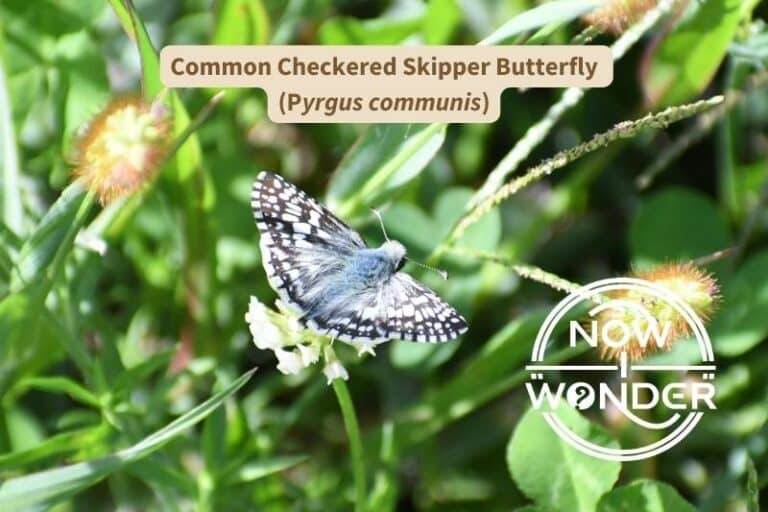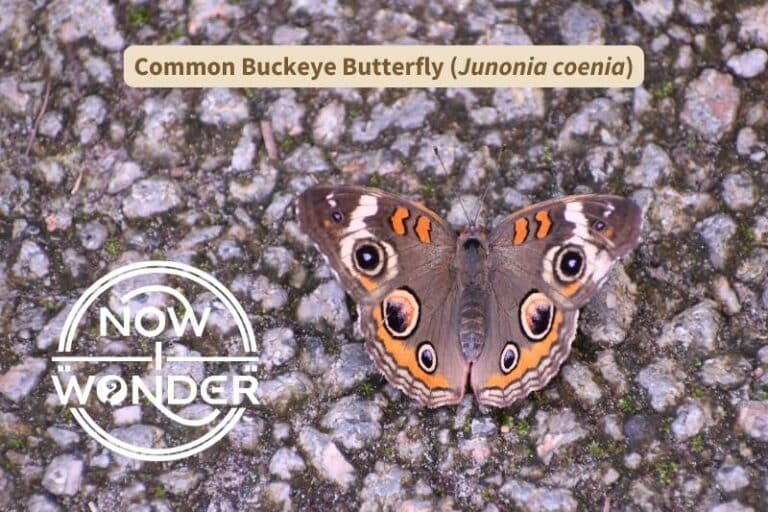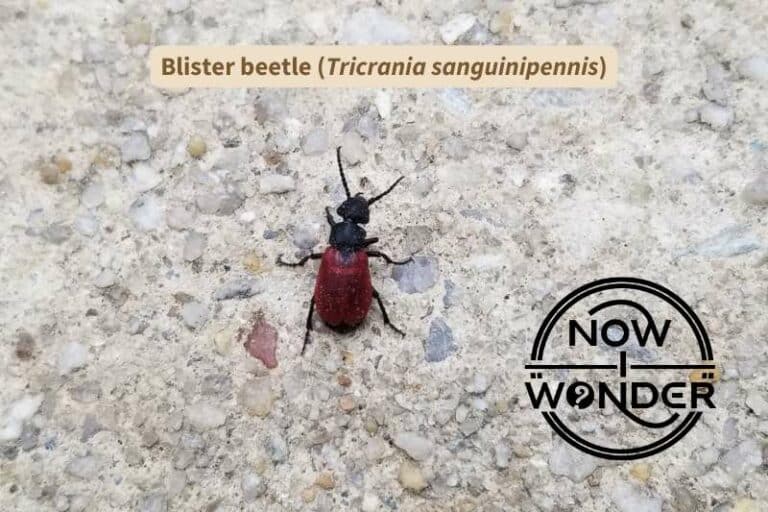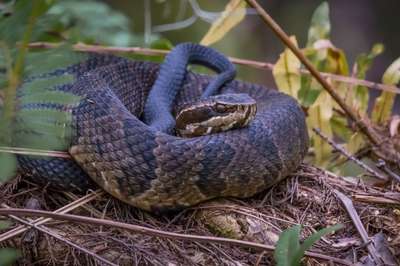Red Admiral butterflies (Vanessa atalanta) are medium-sized butterflies found throughout North Carolina during summer. Locally abundant, they visit flower gardens, and are attracted to fruit. Dark in color, each wing bears a wide, red-orange stripe or band. Males perch in sunny, visible spots.
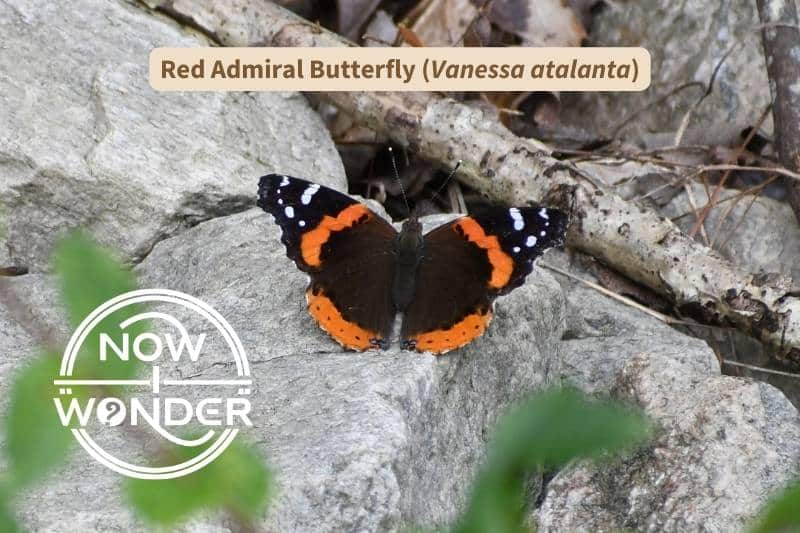
Fun Facts About Red Admiral Butterflies To Wow Your Friends
My absolute favorite thing to do after I identify a butterfly is to learn everything I can about it.
Every species on earth is unique and has its own quirks, hidden talents, enemies, and friends. I call these special tidbits “fun facts” because that’s what they are to me.
Here are a few fun facts about Red Admiral Butterflies that I hope you enjoy too!
- This species’ common name, “Red Admiral” has nothing to do with the Navy. They were originally called “Red Admirables” in 1800’s England (Shapiro, 2007). Over time, their common name drifted to “Admiral” in the United States.
- Red Admirals (Vanessa atalanta) are classified in the same family as White Admirals (Limenitis arthemis astyanax), but in different genera.
- Both Admirals are “brush-foot” butterflies in Family Nymphalidae.
- But Red Admirals are more closely related to Painted Lady (Vanessa cardui) and American Lady (Vanessa virginiensis) butterflies than to the White Admiral (otherwise known as the Red-spotted Purple butterfly).
- Red Admiral butterflies are extremely strong fliers. Found in both North America and Eurasia, they migrate across continents.
- On long flights, tiny organelles inside each wing muscle cell provide this energy by oxidizing stored body fat. These organelles are called “mitochondria”.
- Red Admirals have more mitochondria per cell than other species, who don’t fly as far (Rauhamaki et al. 2014).
- Red Admirals are common visitors to home gardens, especially in the spring.
- While Red Admiral butterflies will drink flower nectar, they prefer tree sap, fermenting fruit, and dung (Daniels, 2003).
- Red Admiral caterpillars create shelters for themselves. They bend leaves of their host plants together and anchor the edges with silk to make little tents, within which they hide from predators.
- Red Admirals are wary and difficult to approach, often flying off before you can get a close look at them. But the males are also territorial and stake out areas they consider their own. The males will fly out to investigate activity in their territories. So sometimes, Red Admirals come to you.
But fun facts are a whole lot more fun when you get to see the actual animal in real life. So read on to find out where, when, and how to find Red Admiral butterflies in North Carolina, and how to make sure you’re looking at the animal you think you are. You’ll be so glad you did!
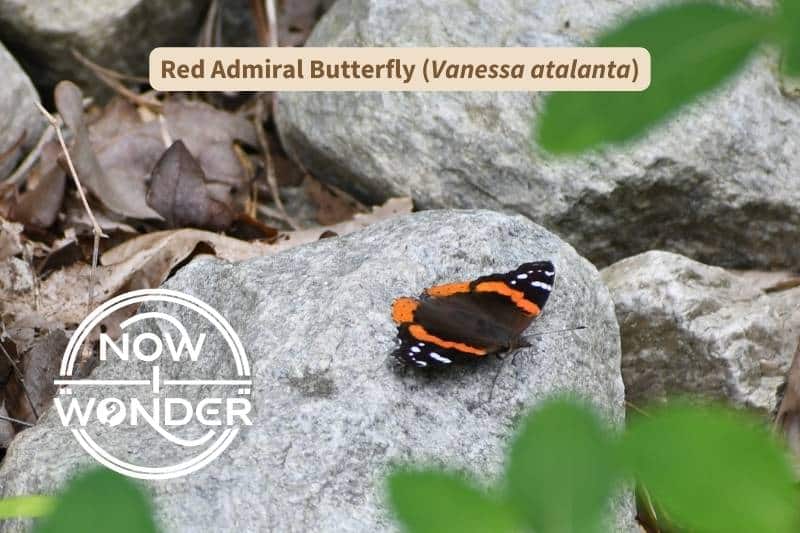
How Are Red Admiral Butterflies Classified?
| Kingdom | Animalia |
| Phylum | Arthropoda |
| Class | Insecta |
| Order | Lepidoptera |
| Family | Nymphalidae (“brushfoot” butterflies, subfamily Nymphalinae “true brushfoots”) |
| Genus species | Vanessa atalanta |
How Do I Know I’m Looking At A Red Admiral Butterfly?
Appearance of Red Admiral Butterfly Eggs
Female Red Admiral butterflies lay small green eggs. They lay them one at a time on the leaves of host plants.
Appearance of Red Admiral Caterpillars / Larvae
Red Admiral caterpillars can look very different in different locations. Most of the time, they are dark colored, speckled with gray, and have a row of pale crescent-shaped spots running down their sides. Their bodies are covered with lots of bristles.
They are solitary and spend time hidden in leaf shelters they construct themselves.
Appearance of Red Admiral Butterflies
Adult Red Admiral butterflies are easy to identify. No other North Carolina butterfly looks like them and males and females look similar. This is awesome news for amateur naturalists.
Red Admiral butterflies are medium-sized, with wingspans up to 2.5 inches (6.35 cm). Their eyes and bodies are solid black. Their antennae are black as well, with white tips.
The upper surface of Red Admiral wings are black overall. A thick, unbroken band of bright orange curves down the middle of their forewings. White spots decorate the tips of their forewings.
The hindwings also sport a thick orange band. But the orange runs along the border of each hindwing rather than through the middle. Each hindwing has a pair of tiny blue spots along the inner edge. The rest of the hindwings are basic black.
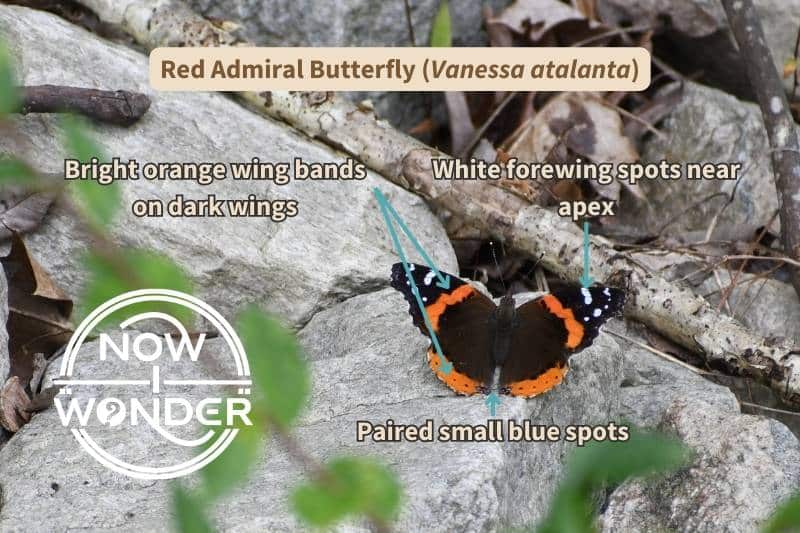
The lower surface of Red Admiral wings have a complex pattern. The underside of the forewings show the same red-orange stripe through their middles as seen on the top surface, with the addition of a a bright blue patch of scales.
The lower surface of their hindwings is mottled brown and black. The pattern resembles tree bark and helps camouflage these butterflies when they land on trees and close their wings. The bright red-orange color seen on the top surface of their wings is a more muted, dull orange along the bottom edge of their ventral hindwings.
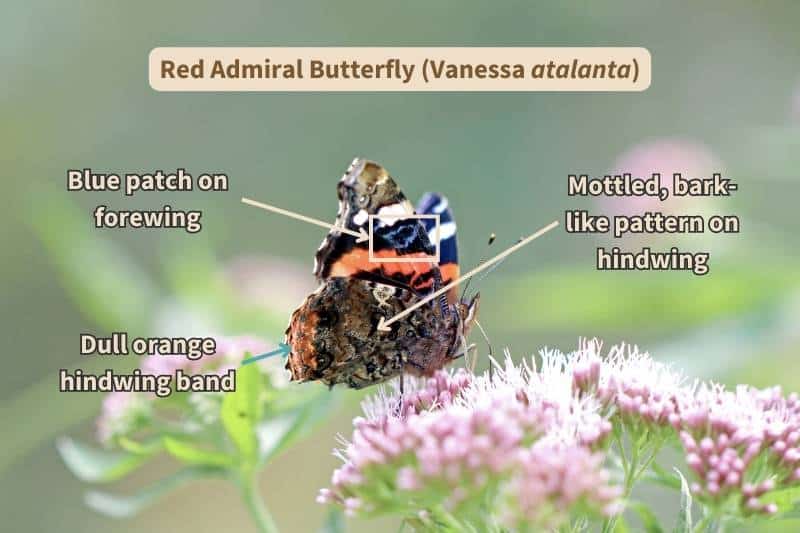
When Can I Find Red Admiral Butterflies In North Carolina?
In North Carolina, Red Admirals fly between the end of February and early November. Like most butterflies, they are most abundant in the summer months, when the heat helps them function.
Where Should I Look To Find Red Admiral Butterflies in North Carolina?
Look for Red Admiral butterflies in wet areas, especially along forest edges. You can spot them along roadside ditches, canals, and near ponds and lakes. They often visit home gardens, especially in the spring.
Red Admirals are often found close to Painted Lady butterflies (Vanessa cardui). These two species share leks, which are areas where males of a particular species gather to show off and compete for females (Shapiro, 2007).
Male Red Admirals like to perch in sunny, visible spots within their leks, where they can see and be seen. They defend their territories against rival males, and display to females, hoping to entice them to mate.
When another butterfly enters a male’s territory, the resident male flies out to investigate. If the trespasser is male, the two butterflies fight until one flies away. If the trespasser if female, the male courts her in flight before they both land to mate.
So, look for Red Admirals either perched alone in sunny patches or swirling around each other in mid-air.
What Do Red Admiral Butterflies Eat?
Red Admiral Butterfly Larval Host Plants
Red Admiral caterpillars eat mostly nettles (Daniels, 2005). Nettles are classified in family Urticaria and North Carolina species include:
- False Nettle (Boehmeria cylindrica)
- Singing Nettle (Urtica dioica)
- Pennsylvania Pellitory (Parietaria pensylvanica)
- Note: This nettle species is found in North Carolina but is pretty rare (Wickmann, 2021).
Adult Red Admiral Butterfly Food Plants
Red Admirals visit flowers to drink nectar but really prefer tree sap, fermenting fruit, and dung (Daniels, 2005)
References
Daniels, Jaret C., 2003. Butterflies of the Carolinas. Cambridge, MN: Adventure Publications Inc.
Rauhamäki, Virve, Joy Wolfram, Eija Jokitalo, Ilkka Hanski, and Elizabeth P. Dahlhoff. 2014. “Differences in the Aerobic Capacity of Flight Muscles between Butterfly Populations and Species with Dissimilar Flight Abilities.” PLoS One 9 (1) (01). doi:https://doi.org/10.1371/journal.pone.0078069.
Shapiro, Arthur. 2007. Field Guide to Butterflies of the San Francisco Bay and Sacramento Valley Regions. Berkeley: University of California Press.
Wickmann, Brenda L. 2021. Natural Heritage Program: List of Rare Plant Species of North Carolina. North Carolina Natural Heritage Program, N.C. Department of Natural and Cultural Resources. https://www.ncnhp.org/


